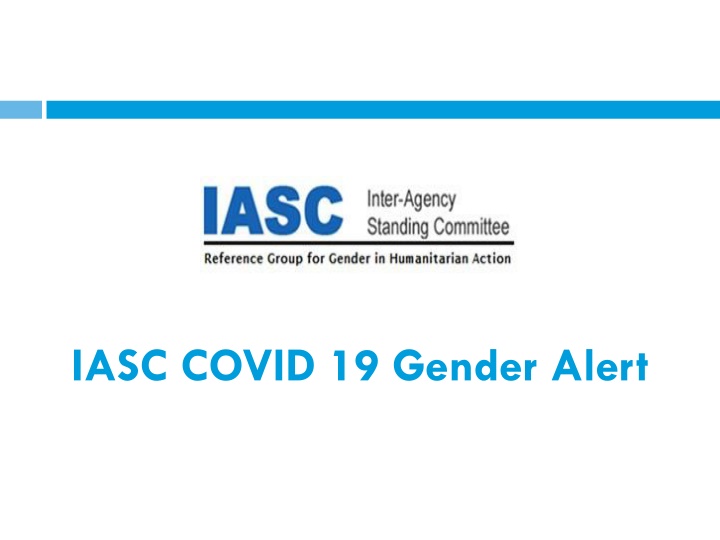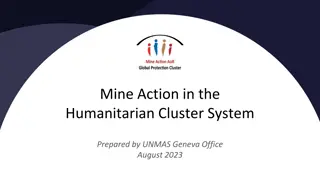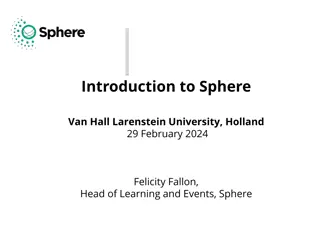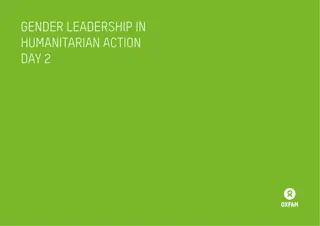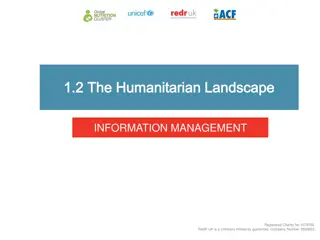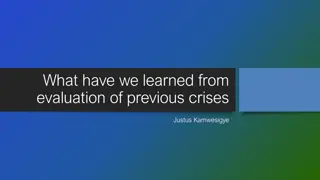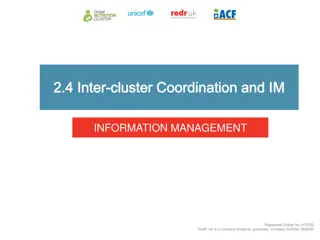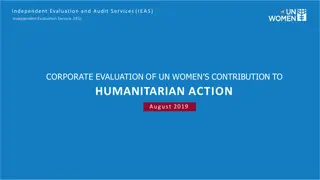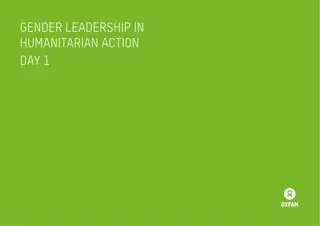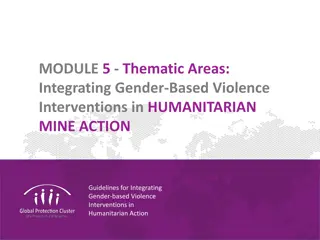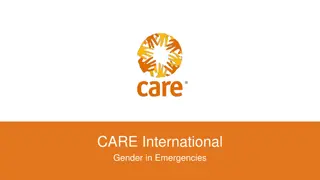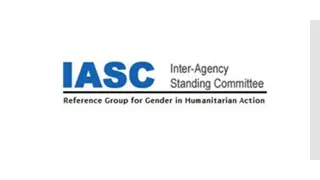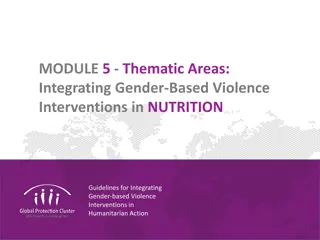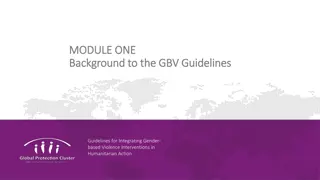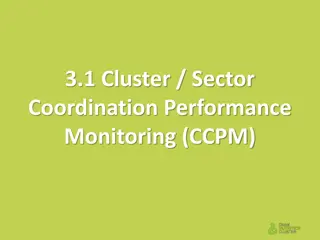IASC COVID-19 Gender Alert - Guidance for Humanitarian Stakeholders
Set out specific guidance for frontline humanitarian stakeholders based on past alerts such as Ebola, South Sudan, and more. Offers an overarching gender analysis of risks posed by COVID-19 and lays out minimum standards for integrating gender into preparedness and response plans. Emphasizes the importance of inclusion of women and gender minorities in decision-making processes.
Download Presentation

Please find below an Image/Link to download the presentation.
The content on the website is provided AS IS for your information and personal use only. It may not be sold, licensed, or shared on other websites without obtaining consent from the author.If you encounter any issues during the download, it is possible that the publisher has removed the file from their server.
You are allowed to download the files provided on this website for personal or commercial use, subject to the condition that they are used lawfully. All files are the property of their respective owners.
The content on the website is provided AS IS for your information and personal use only. It may not be sold, licensed, or shared on other websites without obtaining consent from the author.
E N D
Presentation Transcript
IASC COVID 19 Gender Alert Past gender alerts Ebola, South Sudan, Hurricane Irma, Nepal Earthquake Intended to offer pragmatic, specific guidance to frontline humanitarian stakeholders. All guidance consistent to the IASC gender policy, AF, Gender Handbook etc. GA developed by UNW with inputs from - Plan International, Women Deliver, IRC, WRC, WFP, OCHA, IOM, UNFPA, WHO, UNICEF, IMC, CARE Int l, Concern Translated into Spanish by UNW LAC.
IASC COVID 19 Gender Alert GA sets out an overarching summary gender analysis of risks posed by COVID 19 70% health workers, care duties, livelihood risks, healthcare needs, GBV etc. Accentuates the importance of incl. W&Gs as decision makers and leaders, esp. with regards social mob. Strategies/.
IASC COVID 19 Gender Alert Lays out Min. Standards for integrating gender into preparedness and response plans: Need for gender analysis; SADD; Gender focused assessments; Do-no-harm; Communication efforts; Capacity at decision making level; Interagency/sector gender working group. Provides contextualized guidance for key identified sectors: CMCC; Shelter; Health; Protection; Food Security and Nutrition; NFI; WASH; Education; Livelihoods
IASC COVID 19 Gender Alert 2018 IASC Gender Handbook for Humanitarian Action at: www.gihahandbook.org The IASC Gender Policy, The IASC GBV Guidelines the Inter-Agency Minimum Standards for GBVie Programming IASC GAM
IASC COVID 19 Gender Alert Global Rapid Gender Analysis Covid-19 CARE and International Rescue Committee Published March 2020
What is Rapid Gender Analysis? Used in over 50 countries worldwide Three core principles: Fast, Progressive, Practical RGAs are imperfect requires updating!
Gender analysis series for COVID-19 CARE Global RGA COVID-19 Local, regional RGA CARE Policy Paper
RGA Gender COVID-19 Findings Limited Gender Data available on direct and indirect impacts Women are missing from Covid-19 decision- making Significant increase in women s unpaid care roles
Key Sectoral Findings Decreasing Access to Healthcare Sexual and Reproductive Health at Risk Gender-based Violence is Increasing
GBV is Increasing Reported Increased in GBV in quarantine Lockdown & violence Access to GBV services Availability of GBV services Sexual Exploitation and Abuse
Unequal access to health care Poverty and health Older people and persons identifying as having a disability Social, sexual and gender minority groups
Sexual and Reproductive Health at Risk Resources diverted from existing health services Exacerbated Impacts on already weak heath care Reliance on free or subsidised care Unequal gender norms create barriers to access Pregnant women and newborns Household power dynamics
Access to information Refugees and migrants Racism & discrimination Reports of racism since COVID-19. Fear of/or actual stigmatisation and discrimination can impact health- seeking behaviour and health service provider attitudes. Gender gap in comprehension and ability to take action of community-based messages: different levels of literacy and education between women and men, boys and girls. IDP, refugee camps, informal settlements face overcrowded conditions, lack of access to WASH and health facilities making Covid-19 prevention (such as handwashing & social distancing) more difficult.
RGA Recommendations 1. Collect and analysis sex and age disaggregated data in needs assessments and advocate for Covid-19 SADD data at national and regional level. Develop Regional and Local Rapid Gender Analysis for Covid-19; Global work on a Joint Multi-Sectoral Rapid Gender Analysis. Decision-makers and those coordinating response efforts should use gender analysis and include gender specialists at global, national and local levels Advocate for Covid-19 coordination and decision-making bodies are gender-balanced and inclusive, at global, national and local levels Across agencies, establish/strengthen, inclusive two-way community- based risk communication: localized, evidence-based, gender- responsive, and dispels myths and misinformation GBV prevention and response and Health/SRH services in line with the MISP, must be seen as life-saving interventions across those working on humanitarian response. A zero tolerance approach to SEA must be applied by all actors. 2. 3. 4. 5. 6. 7.
